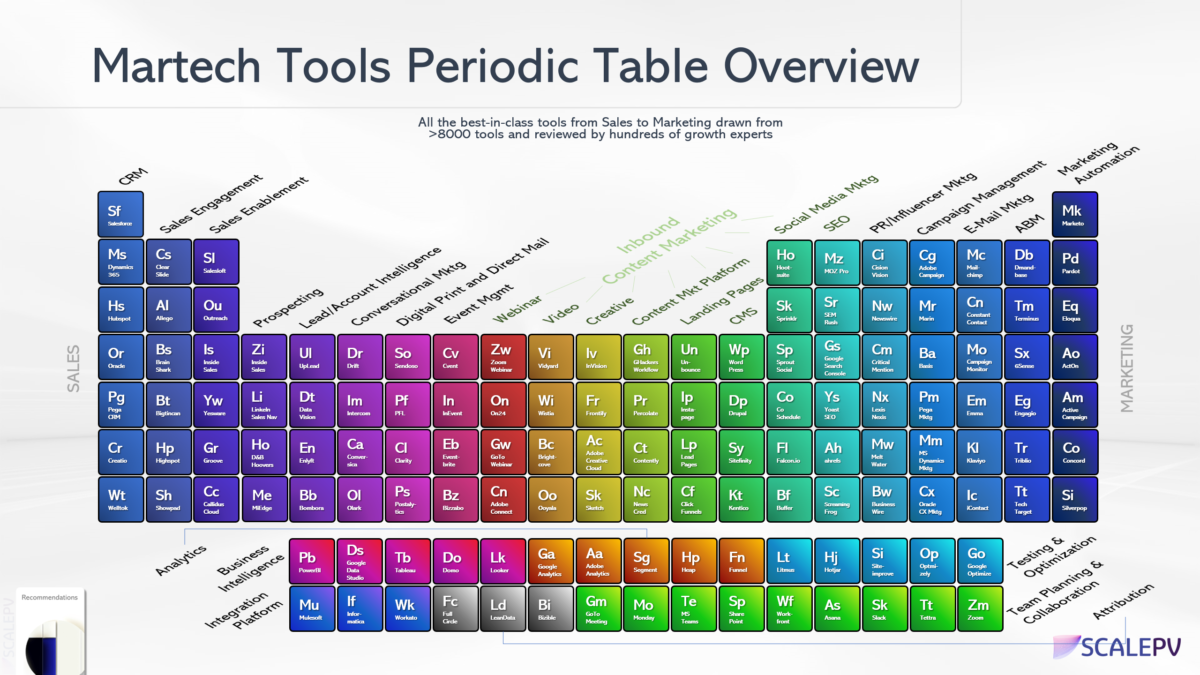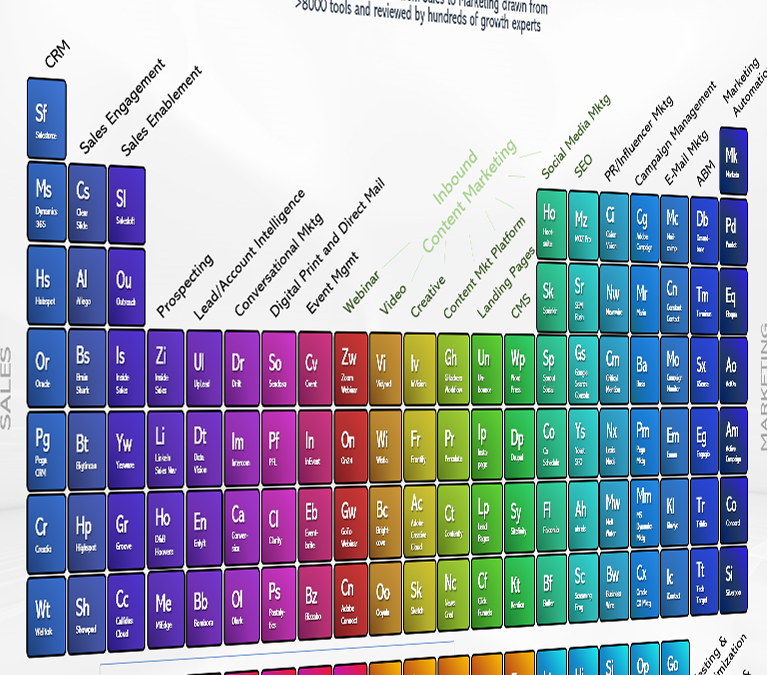A marketing technology stack (MarTech) is a collection of technologies used by marketers to optimize and extend their marketing processes throughout the customer’s lifecycle. Marketing teams also use MarTech to deliver marketing campaigns more efficiently and effectively. Key features of the MarTech stack are automating tasks, streamlining workflows, enabling data-driven decision making, and helping marketers evaluate and improve campaign performance.
The use of technology by marketing organizations is more dynamic than simply using multiple tools separately for their own isolated purposes in the marketing organization. Instead, marketing technologies are coming together to create an integrated set of tools to build seamless customer relationships across multiple channels and marketing activities. So, to achieve business goals, companies create a MarTech stack applying a methodical approach to optimize operations and enable a better customer journey. Companies that visualize customer experiences and build their MarTech stack to simultaneously improve CX while supporting marketing and sales goals are often the winners in their market segment.
Optimizing your current technology stack doesn’t have to be a rush and replace task, it can be guided by a marketing strategy so that it is timed to succeed. Instead of a “brilliant approach” where marketing executives try every new tool that comes to market, companies that win are focusing on building smarter, smaller, increasingly interconnected, and noticeably more powerful technology stacks.
In the world of marketing there are literally thousands of tools – over 10,000 to be exact – and innovations designed to help you automate and optimize marketing efforts. The best tools are those that use and integrate your current marketing technology stack, since adoption of each new tool comes at a cost: time, resources, and money. Therefore, it is important to research and test before combining marketing tools and technologies in all aspects of MarTech: marketing automation, attribution, analytics, CRM, sales enablement, conversational marketing, social media management, paid media, and many others.
After all, not only are companies managing multiple touchpoints with multiple marketing channels, but small marketing teams cannot manage all these moving parts without the help of marketing automation and other MarTech tools. Aside from the need to manage large amounts of content assets, coordinate sales, and manage content on websites and social media platforms, there are other important considerations that companies might overlook and ignore when building their MarTech stack. The graphic below, in periodic table format, illustrates the many categories ranging from marketing to sales, some of which are typically overlooked when selecting a stack.

Usually the most effective MarTech tools are those that you can fully understand and use correctly, which means simplifying your MarTech stack from the start, usually using platforms that provide easy integration options with other technologies. Creating the perfect MarTech stack is tricky. Choosing the right technology from a list of thousands, making it easy to use, and tweaking it for maximum benefits can be time consuming and disorienting for novices.
Marketing technologies need to be analyzed by marketing and sales, while I.T. should check compliance. Most companies have their own internal processes and ways of doing business, so make sure to involve management and other departments for early wins. Building a stack of technologies that can work together in the company environment is essential to achieving consistent support and growth.
As with other areas of your marketing strategy, when it comes to creating the right mix of marketing technologies for your business, not everyone fits the bill. The technology you choose will depend on factors such as your budget and your type of business. The key factor to consider is your target market; for example, a B2C business is likely to require slightly different technologies from B2B technologies, as each one typically uses different channels and methods to acquire and interact with customers.
Essentially, the modern MarTech stack is a neat collection and synthesis of (SaaS and PaaS) online platforms, emphasizing digital marketing functions to support your business.
Nowadays you can build your digital marketing strategy in many different ways, depending on your audience (B2C/B2B), product, business model and sales structure. Like almost everything else that builds a reliable stack, marketing tools can be complex or simple based on your business needs. Working in tandem, these apps allow you to promote your content, build awareness, and ultimately attract customers. For example, consolidated content management platforms help you manage all your social feeds, content calendar, and reports into one place, making it more efficient to sign in and out of individual apps on its own platform to manage these features.
All of this should work well together in the technology team leading your company’s marketing campaign. Whether adding to an existing technology stack or building one from scratch, it is important to work with your own stack and levy those with your company’s assets in terms of knowledge, system requirements, and business goals.
Sources
[1]: https://marrinadecisions.com/best-practices-for-digital-transformation-with-martech/
[2]: https://www.martechalliance.com/what-why-how-marketing-stack-management
[3]: https://pipeline.zoominfo.com/marketing/marketing-technology-stack
[4]: https://reputation.com/resources/articles/building-a-martech-stack/
[5]: https://merlinone.com/important-considerations-when-building-a-martech-stack/
[6]: https://www.linkedin.com/pulse/how-build-marketing-technology-stack-from-scratch-michael-halyk
[7]: https://www.intercom.com/blog/the-ultimate-marketing-technology-stack/
[8]: https://mojopsg.com/forward/best-practices-for-managing-your-marketing-tech-stack/
[9]: https://www.wsidigital.ie/blog/a-guide-to-building-a-marketing-tech-stack/
[10]: https://www.wsiworld.com/blog/foundations-building-marketing-tech-stack
[11]: https://www.upwork.com/resources/how-to-build-your-martech-stack
[12]: https://blog.hubspot.com/marketing/how-to-build-a-marketing-stack
[13]: https://automat.ai/resources/martech-stack-best-practices/
[14]: https://helpmonks.com/blog/your-definitive-guide-to-a-successful-marketing-technology-stack/

